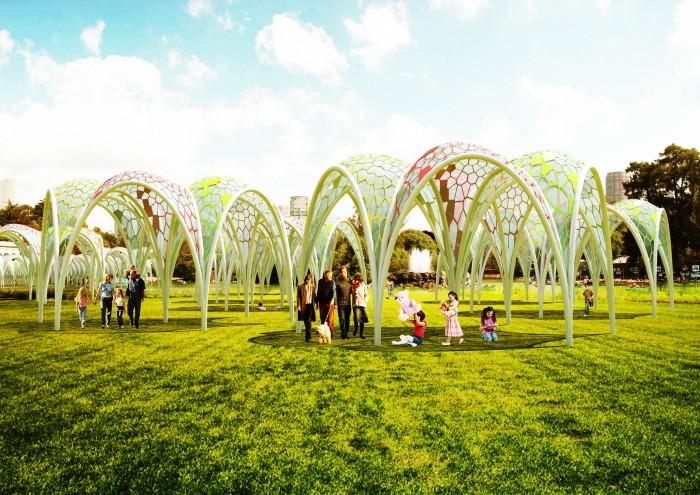“For too long … Africa has solved its problems in an emergency,” says Cameroonian architect Hermann Kamte.
Africa, he says, is well acquainted with quick-fix solutions and because of this, positive results are often short-lived. But what if we designed for prevention instead, addressing not only current needs but also addressing problems yet to arise?
Kamte graduated from EAMAU (École Africaine des Métiers de l’Architecture et de l’Urbanisme), Togo, and years later, he founded his own firm, Hermann Kamte & Associates (HKA).
By 2017, he had received a number international awards, including first place at the World Architecture Festival (WAFX) for Cultural Identity, as well as the American Prize of Architecture. He also delivered a keynote talk at Architecture ZA 2018 conference and was one of the judges at the PPC Imaginarium Awards 2018 in Southern Africa.
Now internationally recognised, his work, he says, is a meeting point between theory and practice. It's an overlap that allows the architect to work with current contraints and strengths without limiting his possibilities.
The traditional understanding of architecture refers to the field as the process of constructing buildings through planning and design. Buildings, however, often have a greater impression on the public than the initial technical design might suggest, explains Kamte.
Light, space and materials all have different impacts on people and need to be taken into consideration when designing any building, from homes, schools to hospitals. These interior properties can affect the mood of occupants, as well as how they interact with one another.
From the outside, buildings become a part of the landscape and culture of a city. They should simultaneously fill a need, while also integrating into their environment.
Kamte explores this constant push-and-pull of function over aesthetics when it comes to architecture. His designs show a deep investigation into the culture and society of their location, while using sustainability in his designs to ensure long-lasting results.
This approach is noticeable in his award-winning work, Lagos’ Wooden Tower (below).
As the name suggests, this residential building is a smart-city solution made primarily of a local material, wood. In this design, the wall patterns represent freedom and patronage and are symbols from the Yoruba culture. The design also maximises ventilation and natural light, while providing green space common areas for social gatherings.
“One of the focuses of this project was to propose an alternative vision of the future for fastest growing cities across the world integrating cultural influence and sustainable materials.” explains Kamte.
He is especially interested in making wooden architecture more conventional, considering its sustainable impact. “In my country Cameroon, we have the second largest forest in Africa; it is a golden opportunity to develop a smart and resilient architecture around a local resource: wood.” says Kamte.
In this work, Kamte focuses on the relationships between culture, sustainability and community and manages to highlight each of these themes in the final design. This sort of meticulous work means that Kamte’s projects are incredibly research heavy.
For every project, Kamte asks himself: “For whom? For what? And why?” and allows the answers he finds to influence his designs.
In the project PIXA (above), which is a customisable and shaded shelter made from alternative sun umbrellas, Kamte used a full week for research and only one day to create the final design. This is evident in how adaptable PIXA is to any environment. The sun umbrellas can be attached together to create temporary community spaces in various geometric forms.
In this way, Kamte hopes to change the process of solution-finding in African countries. By spending time on research and making sure to consider the past, present and future environment of every project, Kamte designs enduring solutions.
For now, Lagos’ Wooden Tower and PIXA are only proposals of theoretical buildings, but Kamte hopes to one day be able to bring these designs, and the ideas behind them, to life.
According to Kamte, “We no longer want spontaneous cities … We want adaptive cities which anticipate our need to provide the maximum comfort by producing the minimum of damage to the environment, we want smart cities.”
More on sustainable architecture design:
LifeArk, off-grid housing is focused on sustainable community transformation
Students explore bamboo as sustainable alternative to conventional building








